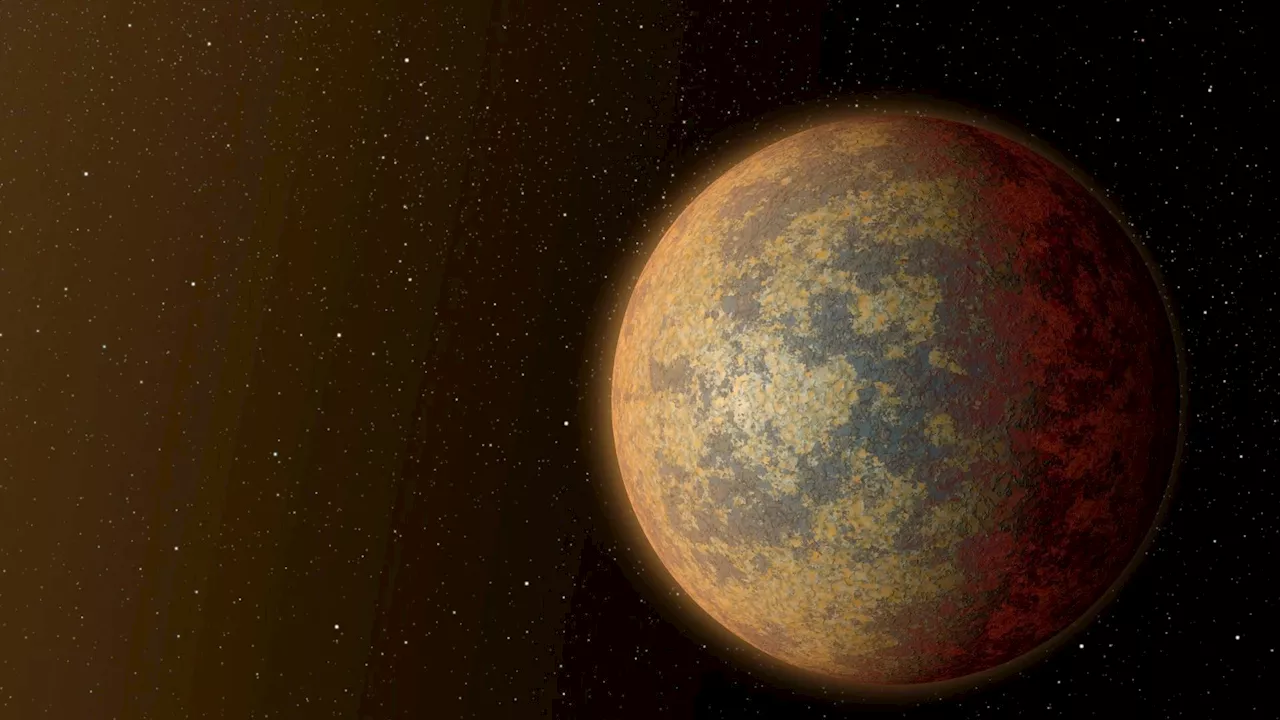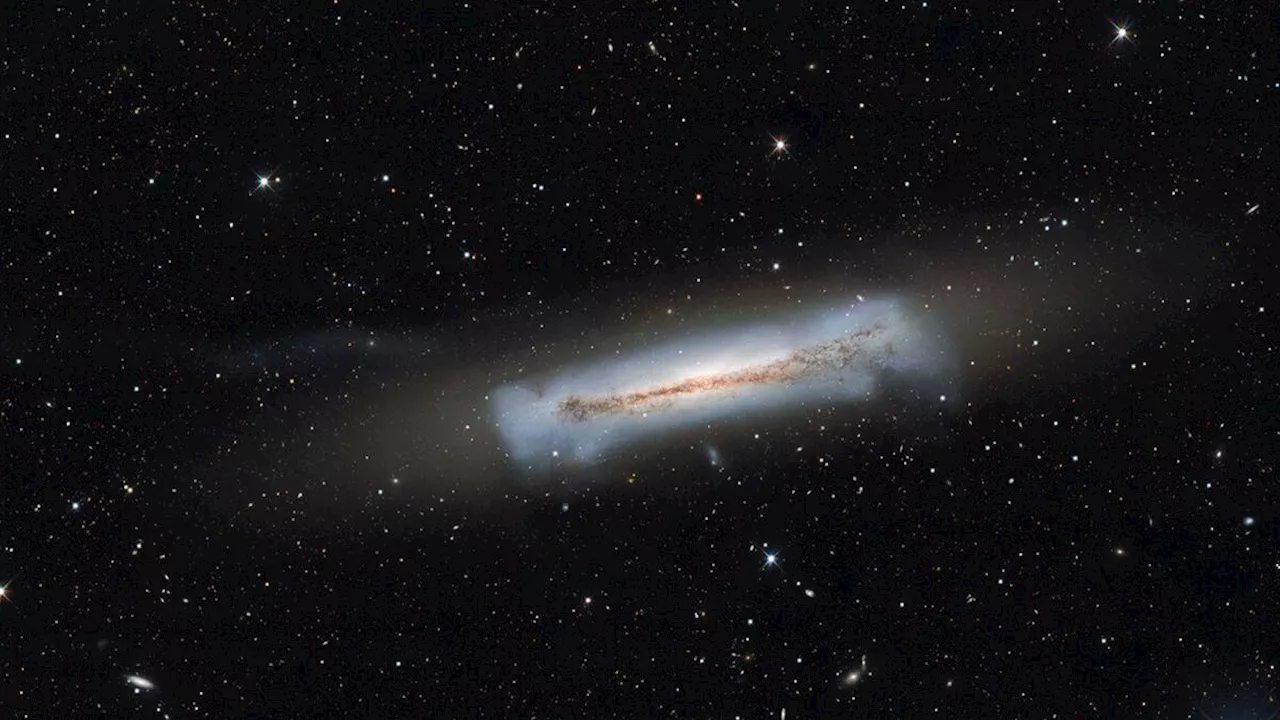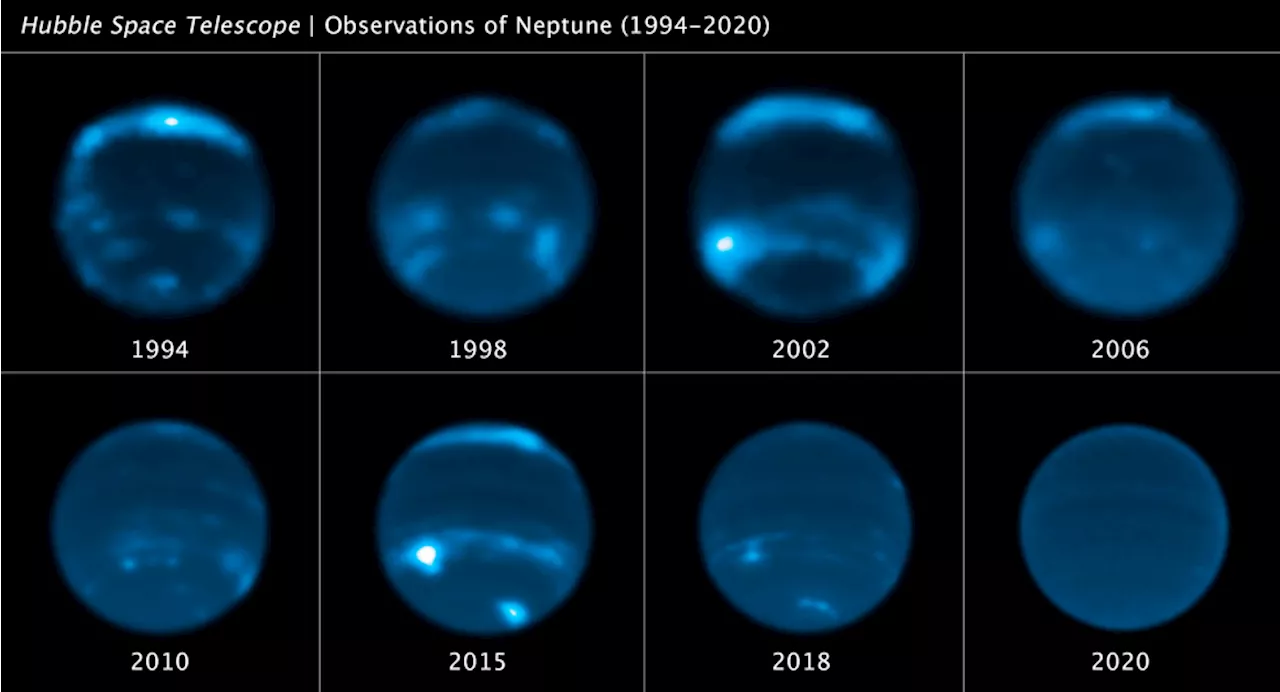Astronomers have spotted a galaxy in the distant universe that closely resembles the Milky Way, challenging key theories on galaxy evolution. The faraway system, called ceers-2112, is a barred spiral galaxy and is now the most distant of its kind ever observed. The galaxy's distinct structure was already in place 2.1 billion years after the big bang.
Astronomers have spied an intriguing phenomenon in the distant universe — a galaxy that closely resembles the Milky Way — and it's challenging key theories on how galaxies evolve. The faraway system, called ceers-2112, was spotted by an international team using the James Webb Space Telescope . Like our home galaxy, the newly discovered ceers-2112 is a barred spiral galaxy , and it's now the most distant of its kind ever observed. The bar at the center of the structure is made of stars.
Ceers-2112 formed soon after the big bang created the universe (which is estimated to be 13.8 billion years old), and the galaxy's distinct structure was already in place 2.1 billion years later. Given the distance between Earth and the objects from the early days of the universe, when telescopes like Webb observe light from the distant cosmos, it's effectively like looking into the past
Astronomers Galaxy Milky Way Universe James Webb Space Telescope Ceers-2112 Barred Spiral Galaxy Big Bang Evolution
Malaysia Latest News, Malaysia Headlines
Similar News:You can also read news stories similar to this one that we have collected from other news sources.
 Oldest Continents in Milky Way May Harbor Evolved Alien SpeciesNew research suggests that the oldest continents in our galaxy may have formed 5 billion years before Earth, indicating the possibility of alien species more evolved than our own in the Milky Way.
Oldest Continents in Milky Way May Harbor Evolved Alien SpeciesNew research suggests that the oldest continents in our galaxy may have formed 5 billion years before Earth, indicating the possibility of alien species more evolved than our own in the Milky Way.
Read more »
 Astronomers Discover Eroding Remains of Dwarf GalaxiesAstronomers have found the eroding remains of 100 dwarf galaxies that have been violently stripped of their outer layer of stars by larger galaxies. These disrupted galaxies are the missing link in the evolution of ultra-compact dwarf galaxies (UCDs).
Astronomers Discover Eroding Remains of Dwarf GalaxiesAstronomers have found the eroding remains of 100 dwarf galaxies that have been violently stripped of their outer layer of stars by larger galaxies. These disrupted galaxies are the missing link in the evolution of ultra-compact dwarf galaxies (UCDs).
Read more »
 Clouds on Neptune Linked to Solar Cycle, Not Seasonal CycleAstronomers have discovered that the clouds in Neptune’s atmosphere are linked to the solar cycle rather than the planet’s cycle of seasons. The global cloud cover on Neptune appears to come and go in sync with the Sun’s 11-year cycle, despite the planet being so far from the Sun.
Clouds on Neptune Linked to Solar Cycle, Not Seasonal CycleAstronomers have discovered that the clouds in Neptune’s atmosphere are linked to the solar cycle rather than the planet’s cycle of seasons. The global cloud cover on Neptune appears to come and go in sync with the Sun’s 11-year cycle, despite the planet being so far from the Sun.
Read more »
 Astronomers Discover Eroding Remains of Dwarf GalaxiesAstronomers have found the eroding remains of 100 dwarf galaxies that have been violently stripped of their outer layer of stars by larger galaxies. These disrupted galaxies are the missing link in the evolution of ultra-compact dwarf galaxies (UCDs).
Astronomers Discover Eroding Remains of Dwarf GalaxiesAstronomers have found the eroding remains of 100 dwarf galaxies that have been violently stripped of their outer layer of stars by larger galaxies. These disrupted galaxies are the missing link in the evolution of ultra-compact dwarf galaxies (UCDs).
Read more »
 NASA telescopes team up to capture 'Christmas tree' view of universeSparkling and colorful images of faraway galaxy clusters recently released by NASA show one of the most detailed views of the universe ever taken.
NASA telescopes team up to capture 'Christmas tree' view of universeSparkling and colorful images of faraway galaxy clusters recently released by NASA show one of the most detailed views of the universe ever taken.
Read more »
